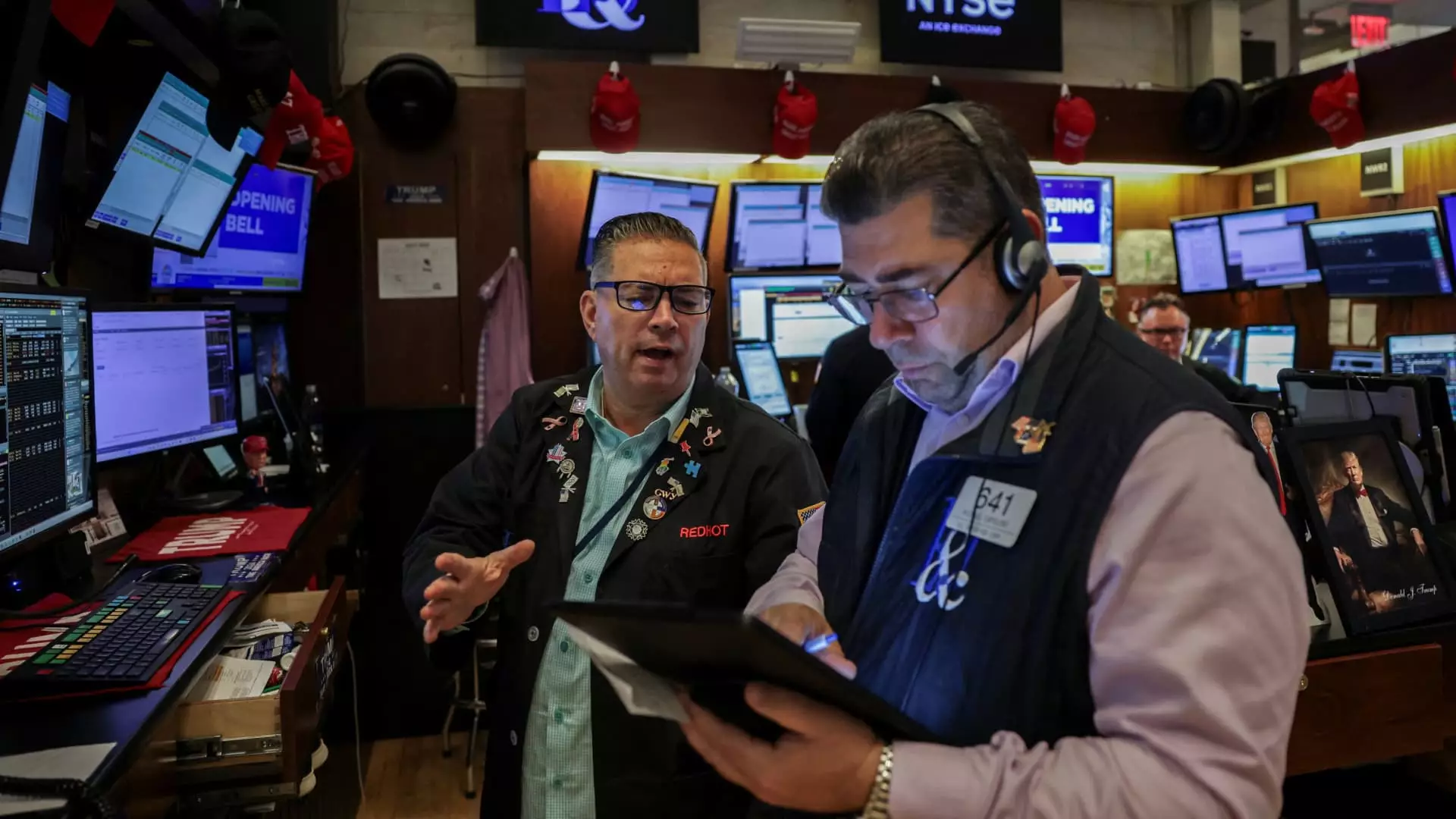In the unpredictable world of financial markets, a recurring theme emerges—technology companies, despite their growth ambitions, appear increasingly vulnerable, revealing cracks in their seemingly unstoppable facade. Netflix’s recent warning about lower operating margins in the latter half of 2025 underscores a larger narrative: even the most dominant firms must confront the reality of rising costs and market saturation. The entertainment giant’s cautious outlook signals that the era of limitless growth may be giving way to more tempered, cautious strategies. Simultaneously, industry stalwarts like Chevron and Hess showcase resilience, capitalizing on geopolitical disputes and resource acquisitions to bolster their positions. Their bullish reactions reflect a market that still holds faith in tangible, commoditized assets—an implicit critique of the overvalued tech sector that tends to overlook the fundamental strength of physical resources. This juxtaposition isn’t mere coincidence; it’s a testament to the shifting power balance that favor companies rooted in real value creation over those banking on speculative narratives.
The Revival of Traditional Industries Amid New Market Opportunities
Amidst the turbulence, some stalwart industrial giants demonstrate surprising agility, defying the general expectation of tech domination. 3M’s impressive second-quarter performance, well above forecasts, exemplifies how established companies leveraging diversified portfolios and resilient supply chains can capitalize on market uncertainties. The increase in full-year sales guidance signifies not just a temporary bounce but a recognition that the manufacturing and industrial sectors retain intrinsic value, often overlooked in favor of flashy tech. Similarly, the railroad industry’s potential merger between Union Pacific and Norfolk Southern hints at a broader trend of consolidation in traditional infrastructure sectors. Such moves signal a strategic acknowledgment that stability and scale, coupled with synergistic efficiencies, remain vital in an era increasingly characterized by volatility and geopolitical tension. These developments highlight an emerging preference for tangible assets and operational resilience—values that can serve as anchors amid global economic turmoil.
Financial Services and the Rise of Digital Adaptation
The financial sector reveals a nuanced picture—some institutions manage to navigate the current climate successfully, while others demonstrate vulnerability. Charles Schwab’s strong second-quarter results, driven by increased brokerage accounts and better-than-expected earnings, show that traditional financial services still possess fundamental strength when adapting to changing consumer behaviors. Meanwhile, the surge in crypto-related stocks following legislative progress indicates a market eager to leverage emerging digital assets, even as skeptics warn of speculative excess. The cautious optimism surrounding firms like Interactive Brokers and Huntington Bancshares underscores an underlying belief: financial institutions that innovate, adapt, and capitalize on regulatory developments will likely emerge stronger. This evolution highlights a key dynamic—while the economy remains fraught with uncertainty, well-positioned firms will exploit policy shifts and technological disruptions to carve out new opportunities within the existing financial ecosystem.
The Contradictions of Market Confidence: A Global Perspective
Despite notable gains across various sectors, a contrarian eye reveals underlying contradictions. The sharp decline in Sarepta Therapeutics’ stock following a tragic incident hints at the fragility of sectors heavily dependent on innovation without sufficient risk management. Conversely, the increase in oilfield services like Schlumberger underscores faith in tangible commodities amidst geopolitical unrest, especially with resource-hungry markets showing resilience. These contrasting signals reflect an economy that is fundamentally split—on one hand, driven by the greed and innovation of high-stakes biotech and tech sectors; on the other, sustained by the enduring value of natural resources and infrastructure investments. This duality exposes an inherent truth: market confidence is increasingly layered, nuanced, and sometimes dangerously overextended. As conservatism in resource-rich industries converges with volatility in digital domains, wealth and influence are shifting toward sectors that promise security and real-world utility over speculative hype.
The Political and Economic Ramifications of Market Shifts
From a center-right liberal perspective, these developments point to a cautious optimism rooted in economic pragmatism. The resurgence of traditional industries and the strategic maneuvering in finance reflect a recognition that long-term stability demands a balanced approach—encouraging innovation but not at the expense of core assets. Policy decisions, such as recent crypto legislation, indicate a willingness to integrate technological advances without forsaking fiscal responsibility or national interests. Meanwhile, the focus on resource extraction and infrastructure brittleness underscores the importance of safeguarding national wealth and ensuring energy independence. As markets recalibrate, political leaders must navigate between fostering innovation and maintaining stability—understanding that economic security forms the backbone of a resilient society. When companies like Chevron and Hess succeed amidst geopolitical turbulence, they embody the very embodiment of pragmatic conservatism—investing in proven assets while cautiously exploring new frontiers.
This terrain, characterized by a complex web of shifting industry dominance and strategic realignments, demands a nuanced outlook. Perhaps the ultimate lesson is that true strength lies in diversified resilience—between embracing innovation and safeguarding core assets. The market’s current narrative, rife with contradictions, emphasizes the need for pragmatism, a clear recognition that sustainable growth depends on measured, sensible policies and corporate strategies. While speculative sectors may dazzle temporarily, the enduring power structures are rooted in the tangible—resources, infrastructure, and institutions that endure beyond fleeting trends. Navigating this landscape requires not just insight into market signals but a firm stance on what constitutes genuine value in a rapidly evolving world. Only then can one truly understand the new power dynamics at play—those that will shape the economic future well beyond short-term gains and losses.

